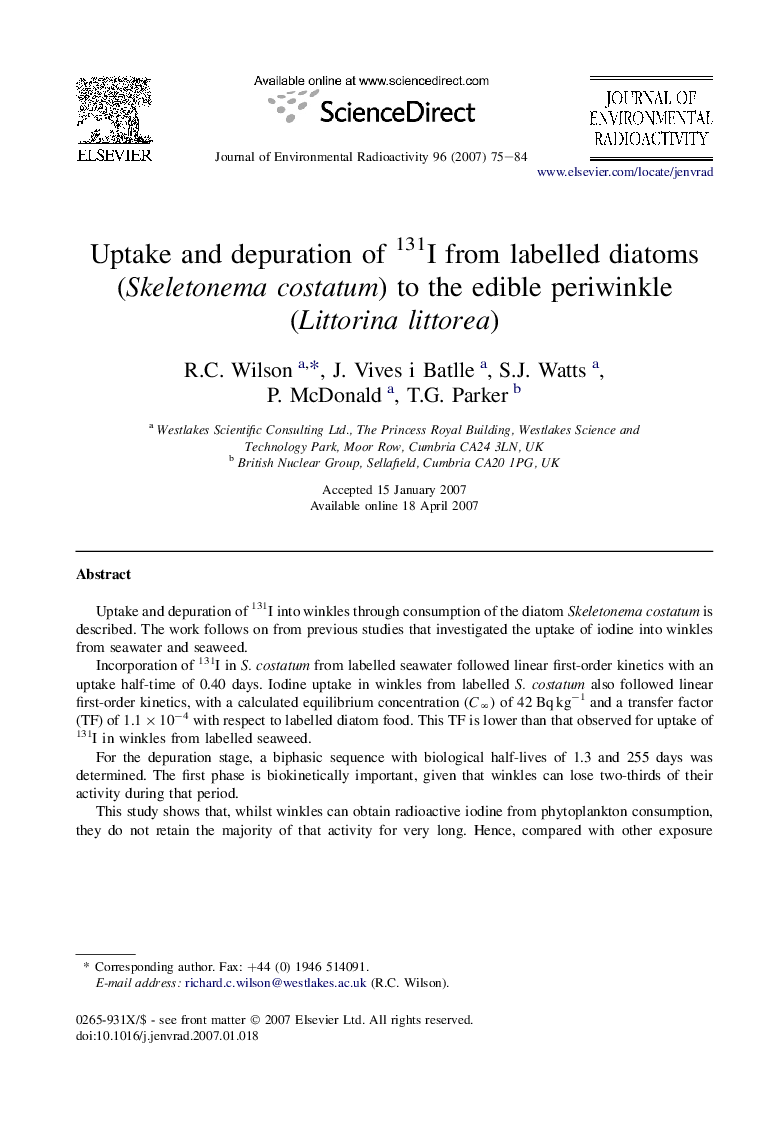| Article ID | Journal | Published Year | Pages | File Type |
|---|---|---|---|---|
| 1739353 | Journal of Environmental Radioactivity | 2007 | 10 Pages |
Uptake and depuration of 131I into winkles through consumption of the diatom Skeletonema costatum is described. The work follows on from previous studies that investigated the uptake of iodine into winkles from seawater and seaweed.Incorporation of 131I in S. costatum from labelled seawater followed linear first-order kinetics with an uptake half-time of 0.40 days. Iodine uptake in winkles from labelled S. costatum also followed linear first-order kinetics, with a calculated equilibrium concentration (C∞) of 42 Bq kg−1 and a transfer factor (TF) of 1.1 × 10−4 with respect to labelled diatom food. This TF is lower than that observed for uptake of 131I in winkles from labelled seaweed.For the depuration stage, a biphasic sequence with biological half-lives of 1.3 and 255 days was determined. The first phase is biokinetically important, given that winkles can lose two-thirds of their activity during that period.This study shows that, whilst winkles can obtain radioactive iodine from phytoplankton consumption, they do not retain the majority of that activity for very long. Hence, compared with other exposure pathways, such as uptake from seawater and macroalgae, incorporation from phytoplankton is a relatively minor exposure route.
